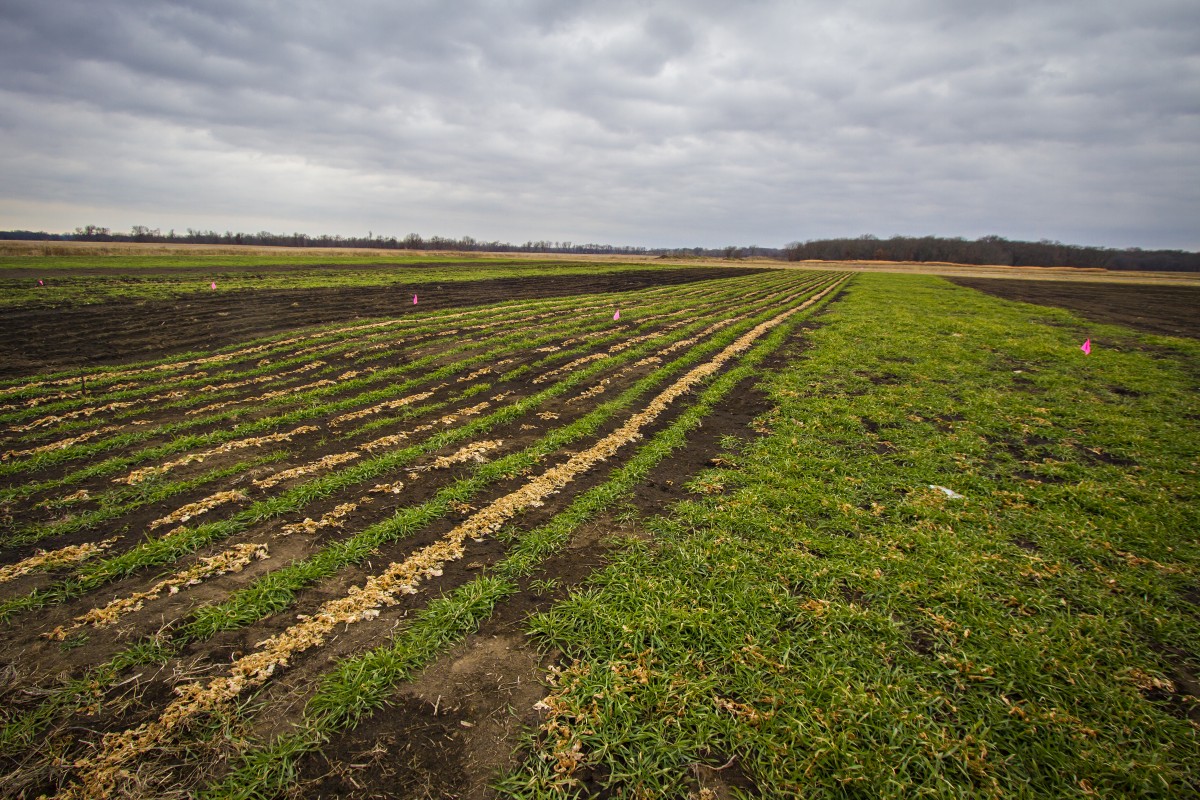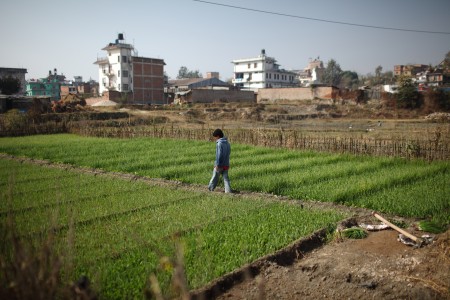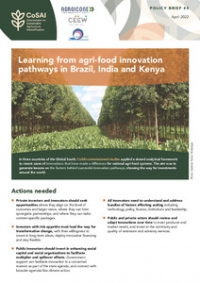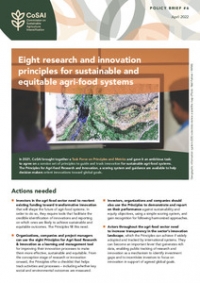
How will we feed a world of 10 billion prosperous people – who might demand over 50 percent more crop output than the planet generates today – without destroying much of Earth’s remaining wildlife habitat in the process?
It’s a key question for conservation today, with agricultural conversion a leading cause of habitat and biodiversity loss and cropland today taking up more than one-tenth of Earth’s ice-free land. Populations of wild animals have been cut in half over the last 40 years, in large part due to farmland expansion. Slowing and halting the expansion of cropland – reaching “peak cropland” – might be the most serious and immediate challenge for global conservation.
If global demand for crops rises as fast as some experts forecast, crop yields would have to increase faster in the next few decades than they did in the period since the 1960s in order to reach peak farmland. That is, we might have to exceed the extraordinary progress made during the Green Revolution – a daunting challenge.
Better technologies will play a crucial role in pushing yields higher while minimizing environmental impacts. Yet the debate on this subject has often been narrowly focused on biotechnology, and GMOs in particular. This narrow focus risks obscuring other tools that are at least as important. In particular, precision agricultural technologies – a broad suite of largely under-the-radar technologies and practices that help farmers use the right inputs, in the right amounts, at the right time, for each field and crop – will be an increasingly important part of the future of food production and the pursuit of sustainable agriculture.
That’s not to say that the tried and tested Green Revolution recipe of increasing inputs of water, fertilizer, pesticides, and machinery – along with modern cultivars – can’t still work wonders to further increase yields in places like sub Saharan Africa. But in many other parts of the world, these low-hanging fruit have already been picked. Applying more fertilizers will increase pollution, not yields, and irrigation has only a modest potential to expand, with many rivers and aquifers already tapped and subject to many competing demands. The groundbreaking new rice and wheat varieties that underpinned early yield gains in places like India and the Philippines were a one-off boost that cannot easily be repeated.
More precise farming has already proven it can raise yields through sheer increase in plant density. With corn, for example, farmers have gone from 30,000 plants per hectare in the 1930’s to over 80,000 today, with obvious implications for yield. These gains have been driven by a range of technologies including GPS-driven tractors that can drive straight, tight rows, and planters that can put individual seeds at specified distances.
In addition to higher density, higher precision in the application of fertilizers, pesticides, and water already helps ensure that fewer plants suffer deficiencies at any time, while also greatly reducing excess applications. (No plant left behind, one might say.) New equipment can apply liquid fertilizer right at the base of the plant, such that each plant gets its fair share, and vary the application rates across the field in response to small-scale variations in soil conditions. Rapidly evolving data collection, analytics, and decision-support systems are increasingly giving farmers the knowledge of how best to use these precision capabilities.
In some ways, precision agriculture takes us back to the future. In some developing countries, very small farms tend to have marginally higher yields than somewhat larger farms. This can in part be explained by the relatively higher labor input on small farms, which can rely largely on unremunerated family labor. Under these circumstances, it is possible to check on every corner of the field on a daily basis, pull out weeds individually, and fertilizer precisely.
For all but the poorest countries, however, these labor-intensive ways of boosting yield are often impractical and uneconomic other than in small-scale field trials and plots set aside for yield contests. In middle and high-income countries, families are smaller, food is cheap and more widely available, and labor is more valuable in other sectors of the economy. In modern, intensive farming, equipment may only go through the field a handful of times per year and the ratio of land to people is such that a very small fraction of the land is visited on foot in any given year.
But today, robots, drones, sensors, and AI software are beginning to make it possible to employ the sort of intensive, fine-grained management practiced by poor farmers; in trials, these precision techniques boost yields to scales previously unimaginable. And the promise is tantalizing: Soil properties that affect crop performance on the scale of weeks or even days could one day be measured or remotely sensed in ten square meter units as compared to every 10 or 100 hectares. Application of fertilizers may be adapted to each little corner of a field, as opposed to a uniform rate across an entire farm.
In short, global agriculture might follow the evolution of global manufacturing from hand crafting to mass production to mass customization, giving each plant the benefit of hand crafting, but with the efficiency of mass production.
Precision farming will by no means take us all the way to peak cropland. Many developing countries still need the infrastructure, markets, and institutions that will allow them to fully benefit from the most basic Green Revolution technologies. Better seeds – through biotech as well as traditional breeding – will play a critical role in both developed and developing countries. But understanding what precision technologies have to offer, today and in the future, makes peak cropland seem more realistic – and the prospect of reversing habitat and biodiversity loss a little brighter.
















Comments
The very first thing that needs to happen in SSA is the soil water regulation to conform deliveries (and diversions from impaired streams and rivers, largely due to drought-cycle, flood-cycle extremes) much, much more near plant demands.
Second, flooded border and furrow, of large basins, in most cases (Exception: Wellton_Mohawk Irrigation and Drainage District in AZ) is wasteful and promotes weed growth.
In the US, precision irrigation means either center-pivot or drip micro. I'd vote for small water impondments, portable pumps, simple filtration, and above-ground dripperline, the latter 3 which also is removed and stored for security and long-life.